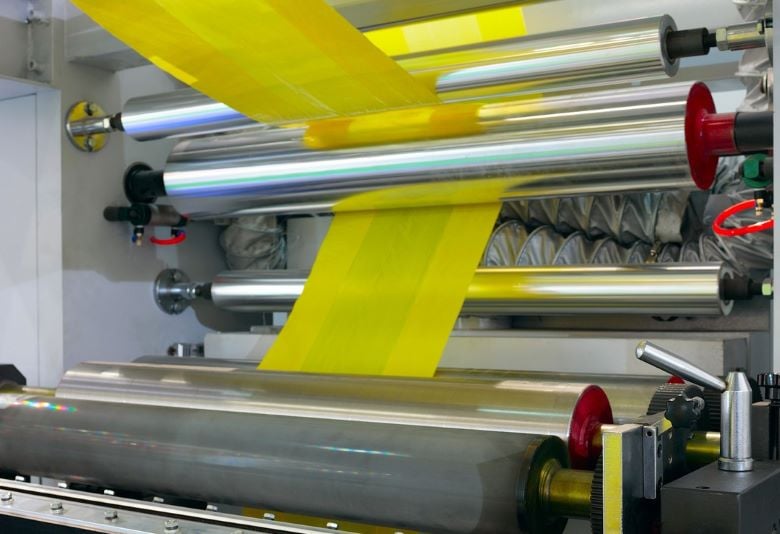Understanding screen ruling in flexo printing is crucial for marketing professionals looking to enhance their print quality and achieve the finest details in their products. In flexographic printing, the concept of screen ruling refers to the number of lines of dots per inch on a plate, which directly influences the resolution and clarity of the print. Without a comprehensive grasp of such a fundamental component, achieving high-quality prints in your marketing materials can prove challenging.
The evolution of flexographic printing has been significant over the years, offering precision in detail necessary for branding and advertising. With its ability to print on various substrates, including paper, plastics, and metallic films, flexo printing is widely used in packaging, labels, and other marketing materials. Among all the facets of flexo printing, screen ruling plays an essential role.

What is Screen Ruling in Flexography?
Screen ruling is an essential parameter in the flexography process. It determines the number of linesor dotsper inch on the printing plate, which affects the overall quality of the printed image. A higher screen ruling means more lines per inch, resulting in a finer and more detailed image. Typically measured in lines per inch (lpi), screen rulings can range from as low as 60 lpi to as high as 200 lpi or more, depending on the printing requirements.
The Importance of Screen Ruling
When it comes to producing high-quality prints, the role of screen ruling cannot be overstated. Choosing the appropriate screen ruling is critical as it affects the tonal gradation, image detail, and color transitions in the final product. For example, a higher screen ruling is ideal for images with small details and smooth gradients, often required in marketing materials aimed at capturing the eye and delivering precise information.
Choosing the Right Screen Ruling
Selecting the correct screen ruling for your project involves understanding the type of substrate used, the nature of the image, the desired print quality, and the limitations of the flexo machinery at hand. Professionals in the marketing sector must make these choices wisely in order to align the finished product with the brand’s overall image and message. For detailed insights into flexibility with substrates, check our related article on flexographic printing works.
Factors Influencing Screen Ruling Selection
1. Type of Substrate
The type of substrate on which the image is printed heavily influences the choice of screen ruling. For example, glossy papers or films can handle a higher screen ruling as they allow for better ink hold-out and finer detail compared to rougher surfaces like cardboard.
2. Image Details
More intricate and detailed images generally require a higher screen ruling to maintain clarity and sharpness. Conversely, less detailed images may not need as high a screen ruling, which can help in saving costs without sacrificing perceived image quality.
3. Printing Machine Capabilities
The technological capabilities of the printing machine also pose limits on screen ruling. High-end machines can handle higher screen rulings better compared to standard machines. Evaluating machine capability alongside desired print quality is crucial for achieving optimal results.
Implications of Screen Ruling on Print Quality
Screen ruling impacts not just the resolution but also the color accuracy and print sharpness. A higher screen ruling allows for the recreation of fine detail and more accurate color gradients, making it especially beneficial in packaging where imagery is key. For a broader understanding of these effects, you may refer to the external reference on flexography and its applications.
However, higher screen rulings also have drawbacks such as increased moir risk and the necessity for more precise control of the printing environment.
Screen Ruling and Cost Considerations
Choosing a higher screen ruling may increase the cost due to more intricate plate preparations and more precise ink usage. Marketing professionals must balance these costs against the visual appeal and brand image captured in the final print. Check out related insights in our article on flexographic printing vs digital printing.
Future Trends in Screen Ruling
As flexography technology evolves, screen ruling is also likely to advance alongside increased demand for finer detail and richer tones. Advances in plate technology and ink formulation will contribute to higher screen rulings becoming more accessible and cost-effective, thus revolutionizing the future of marketing materials.
Conclusion
In summary, understanding screen ruling in flexo printing enables marketing professionals to make informed decisions about their print materials, ultimately leading to more successful branding and communication campaigns. Embracing the technological advancements in this arena is beneficial for long-term growth and brand recognition in an increasingly competitive marketplace.

FAQs
What is an ideal screen ruling for packaging?
Typically, packaging involves detailed graphics and vibrant colors, making a higher screen ruling of around 133 to 175 lpi suitable for most applications, depending on the substrate and machinery used.
How does screen ruling affect production time?
Higher screen rulings usually increase production time due to the need for more precise calibration and thorough quality checks. However, these lead to superior quality prints.
Can all flexo machines handle high screen rulings?
Not all flexo machines are equipped to handle high screen rulings. Newer, more advanced machines generally support higher screen rulings better than older models.






